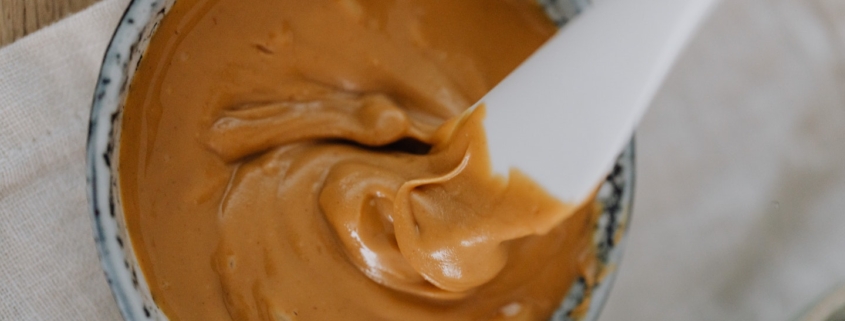Benefits of Introducing Peanut Butter to Your Baby
 Did you know that recently the guidelines of when to introduce your child to peanut butter have changed? The American Academy of Pediatrics now recommends introducing peanuts earlier in an infant’s life, especially those at a higher risk for food allergies, to reduce the risk of developing a peanut allergy.
Did you know that recently the guidelines of when to introduce your child to peanut butter have changed? The American Academy of Pediatrics now recommends introducing peanuts earlier in an infant’s life, especially those at a higher risk for food allergies, to reduce the risk of developing a peanut allergy.
Those at the highest risk are recommended to be introduced to peanuts as early as 4-6 months of age. While these new guidelines have been in place since 2017, recent research has confirmed the effectiveness of early peanut introduction on reduction in peanut allergies. Of course, it is important to always consult with a physician before introducing any high-risk allergen.
These new guidelines mean that more children should be able to consume peanuts than previously before. This is great news because peanuts are a superfood full of healthy fat and vegetarian-friendly protein.
When giving children peanuts, it is important to use smooth peanut butter to reduce the risk of choking. Peanut butter has all of the benefits of peanuts while having the added benefit of being age friendly.
Health Benefits of Peanuts
Peanut butter can be considered a wonder food because of all the different nutrients it contains. Most Americans already consume a good amount of peanut butter, but you can never have too much!
- Protein: Peanut butter is considered a good protein source, especially for a plant-based food. One tablespoon of smooth peanut butter contains 4 grams of protein.
- Fiber:An ounce of peanuts contains 2.4 grams of dietary fiber. Fiber can help lower bad cholesterol (LDL) and keep you feeling full longer.
- Potassium:Your body needs potassium for numerous daily functions. It is used to maintain blood pressure, fluid balance, nerve signals, and muscle contractions.
- Monounsaturated Fats: There are many different types of fat that you can have in your diet, monounsaturated fat is considered a “good” fat. This is because monounsaturated fat has been shown to help lower LDL cholesterol while raising HDL cholesterol.
Homemade Peanut Butter
Making peanut butter yourself is a great way to control exactly what goes into your food. Not only is it more delicious because you made it, but it is super easy to make.
- If you start with dry roasted peanuts you can skip to step two. If not, you can roast the peanuts yourself for 10-15 minutes at 350 degrees. Try to choose peanuts that are salt-free and already shelled for convenience.
- Once your peanuts are roasted, place them in a food processor and let it run for >5 minutes to ensure your peanut butter is smooth. At this point, you can add a pinch of salt or a drop of honey for added sweetness.
- Check the consistency to make sure the peanut butter is blended properly. Scrap the inside of the processor with a rubber spatula, you want a smooth and shiny product.
- Store in the refrigerator to make it last longer, or at room temperature.
Your Turn to Take Action: What is your favorite way to enjoy peanut butter? Let me know in the comments below.


Leave a Reply
Want to join the discussion?Feel free to contribute!